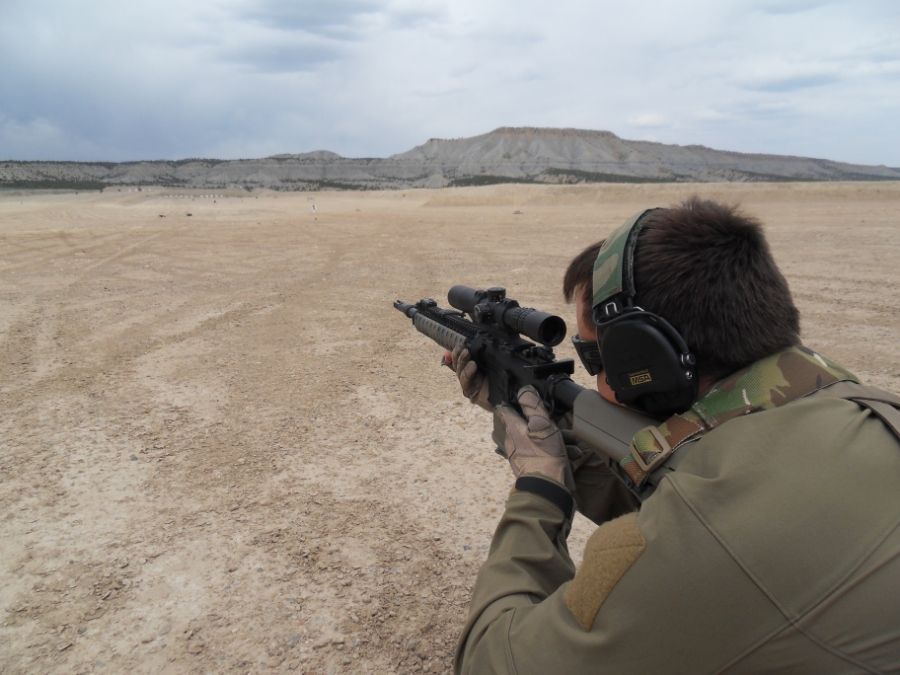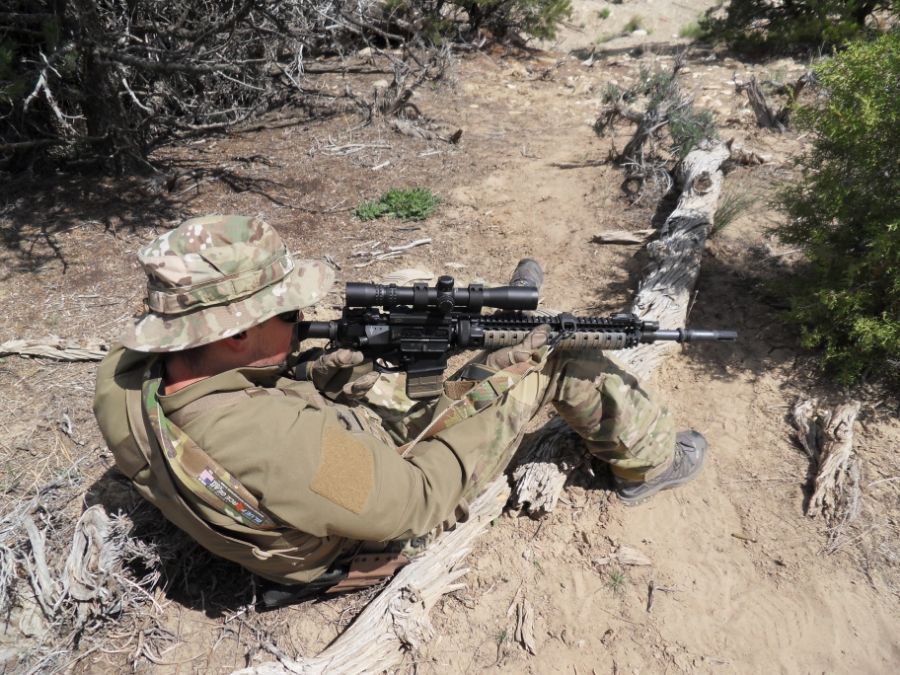This looks like a good idea, but can you watch the bubble "WHILE" looking through your scope?
http://xtremehardcoregear.com/arlevel.html
http://xtremehardcoregear.com/arlevel.html

Follow along with the video below to see how to install our site as a web app on your home screen.
Note: This feature may not be available in some browsers.
This looks like a good idea, but can you watch the bubble "WHILE" looking through your scope?
http://xtremehardcoregear.com/arlevel.html
I use one when shooting at 1,000 yds. with my 6mm Norma BR. bolt gun and it helps me keep my shots in the center of the target instead of shifting the shots to the right or left by canting the rifle even a little bit.
This looks like a good idea, but can you watch the bubble "WHILE" looking through your scope?
http://xtremehardcoregear.com/arlevel.html
I've a S/A 700 with a 20min Nightforce base, med rings and a 3.5X10X40 Mk4, from ctr to where the swivel stops using a 6-9 notched Harris bi-pod at 600 yds there is but 1/2 moa of change each way. Found only 3/4 moa each way with my 300wm that has a 58mm bell. Trust me you cant a weapon that much, you will know it's canted. I've found up to 3-4 degrees is nothing, and most folks can see anything past 2 to begin with if they have shot long enough.
Canting is over rated for most shooting in my book.
Your telling me you can not see a 3-5* or better change w/o a level, while in the field? We did not use such for how many years and now we can't shoot long w/o one? I admit I fell for them as I wanted to my sticks to be tacticool, but I returned to my old days, lite is right. If it's not needed for the ranges I engage why am I carrying it? Again from lock to lock on my Harris I only get 1moa of cant induced change at 600 yds, granted 600 yds is a give me when you get to pick your ffp. Lock to lock is far past 3-5* and even trees or grass do not grow that much off. Been Shooting sense uncle gave me the finer points in 64, never needed one then to do my job, and still don't need one. Maybe others do, don't know don't care, but to me it's just another point of failure or something to get snagged on. Like many here I don't get 1099's and such for touting gear, my words only reflect what I experience, an granted that is not much anymore.Maybe on a flat range, but in natural terrain, the human inner ear and eyes have a hard time determining what level is. Todd Hodnett wouldn't be a big advocate of them if there wasn't merit to bubble levels.
Your telling me you can not see a 3-5* or better change w/o a level, while in the field? We did not use such for how many years and now we can't shoot long w/o one? I admit I fell for them as I wanted to my sticks to be tacticool, but I returned to my old days, lite is right. If it's not needed for the ranges I engage why am I carrying it? Again from lock to lock on my Harris I only get 1moa of cant induced change at 600 yds, granted 600 yds is a give me when you get to pick your ffp. Lock to lock is far past 3-5* and even trees or grass do not grow that much off. Been Shooting sense uncle gave me the finer points in 64, never needed one then to do my job, and still don't need one. Maybe others do, don't know don't care, but to me it's just another point of failure or something to get snagged on. Like many here I don't get 1099's and such for touting gear, my words only reflect what I experience, an granted that is not much anymore.
You do recall me saying lock to lock correct? Now I don't know how much is in your Harris or what your mechanical off set is(mine is 1.72) but the LTL in my Harris is ruffly 26* total (13* each way) and that only produces ruffly 1 moa at 600. I never questioned how canting effected shot placement, but I can't read the wind to a grand or better within 1 mph either on the first shot, like everyone on the internet climes they can. Bottom line if you can't see a 3-5* cant in your scope let alone a 13* on the lock or 26* total, I doubt a level is going to help you much other than making you think it will. 1*/26*=0.0384 moa and 5*/26*=0.1923moa, at 600. Lets see, 1 moa at 600 is 6.282 inchs and 0.1923 moa (5*) at 600 is ruffly 1.208 inches. I'm guessing factors other than a level, come into play when group dispersal/size is larger than that?1 MOA at 600yds is over 6"s which is dramatic in any type of shooting.
You do recall me saying lock to lock correct? Now I don't know how much is in your Harris or what your mechanical off set is(mine is 1.72) but the LTL in my Harris is ruffly 26* total (13* each way) and that only produces ruffly 1 moa at 600. I never questioned how canting effected shot placement, but I can't read the wind to a grand or better within 1 mph either on the first shot, like everyone on the internet climes they can. Bottom line if you can't see a 3-5* cant in your scope let alone a 13* on the lock or 26* total, I doubt a level is going to help you much other than making you think it will. 1*/26*=0.0384 moa and 5*/26*=0.1923moa, at 600. Lets see, 1 moa at 600 is 6.282 inchs and 0.1923 moa (5*) at 600 is ruffly 1.208 inches. I'm guessing factors other than a level, come into play when group dispersal/size is larger than that?


